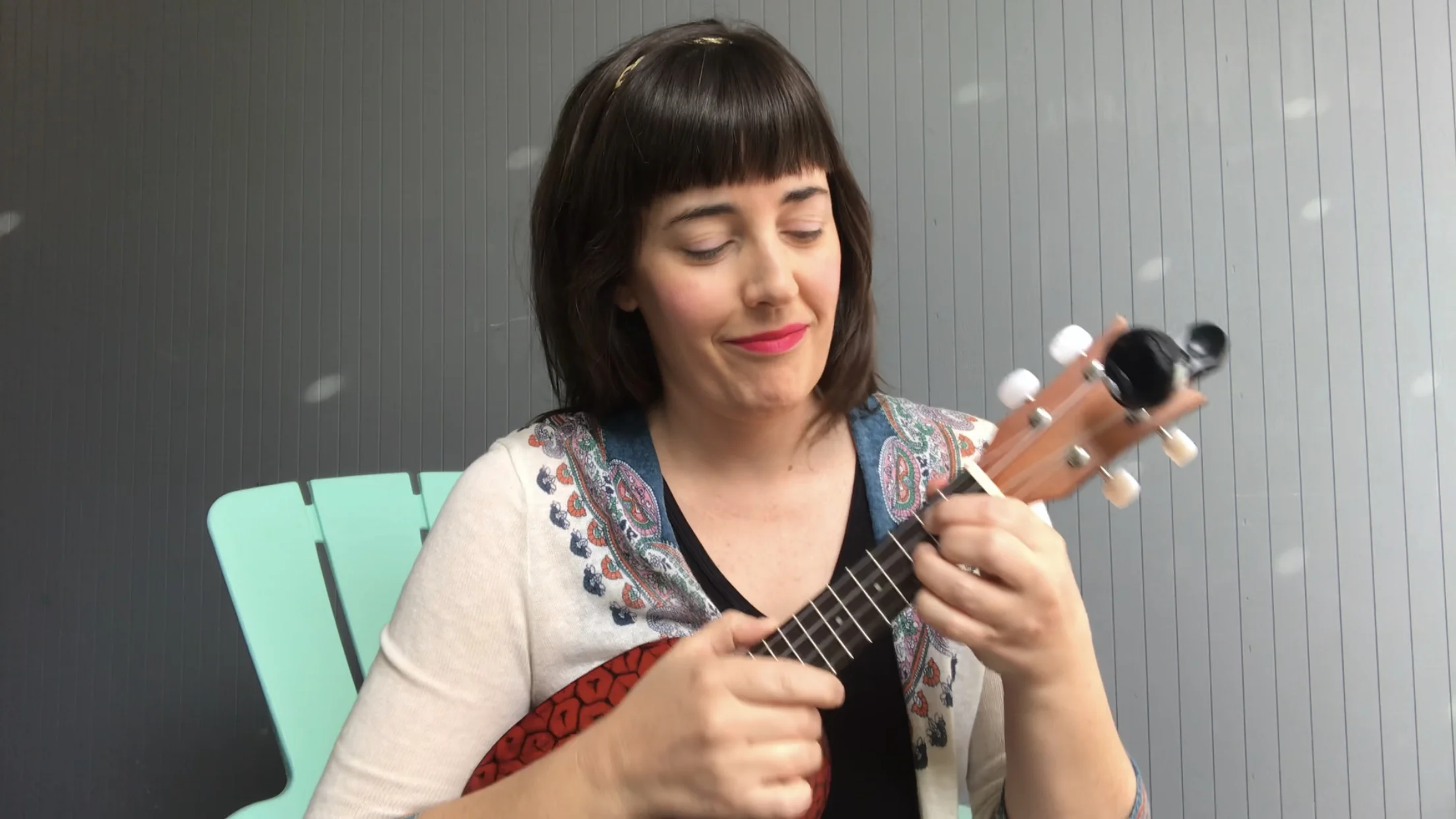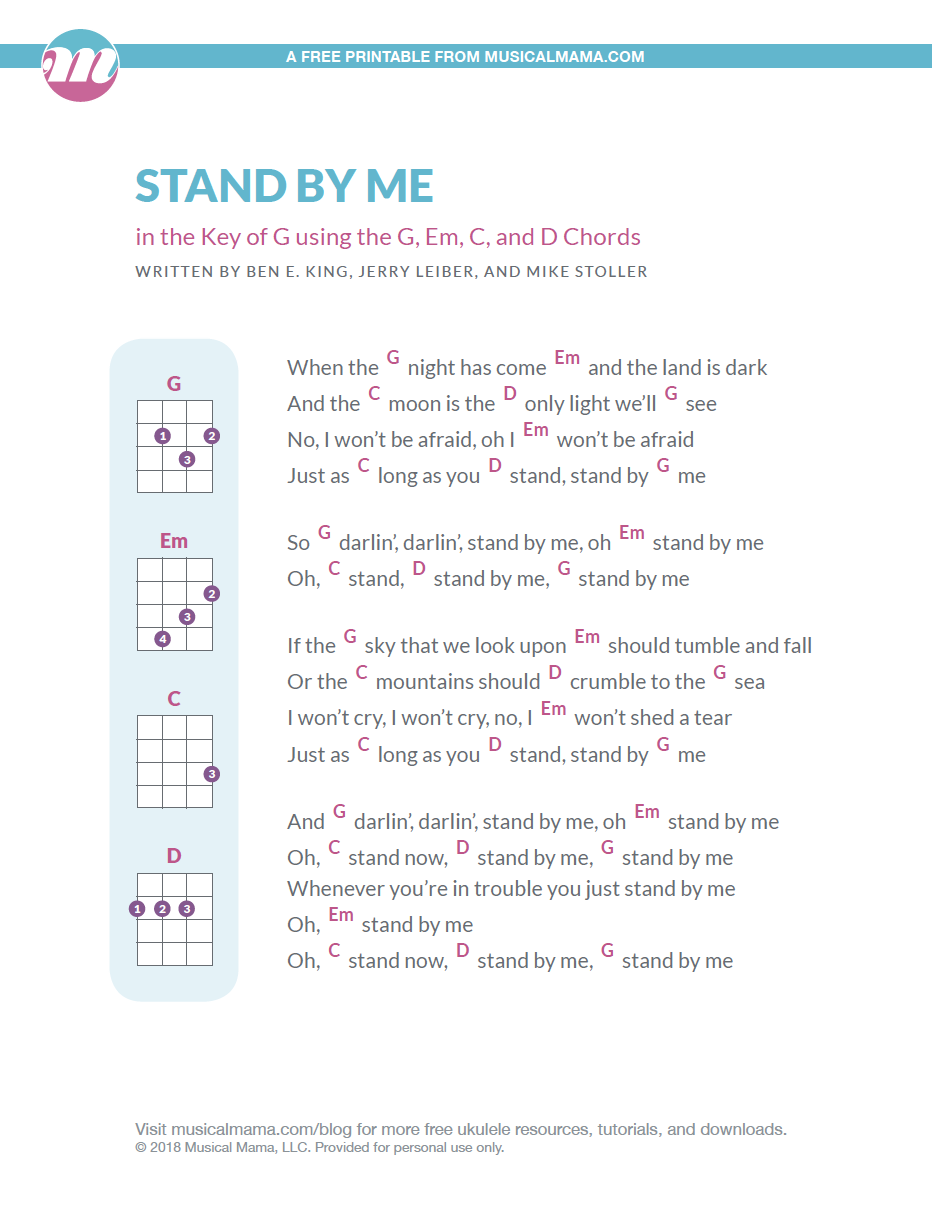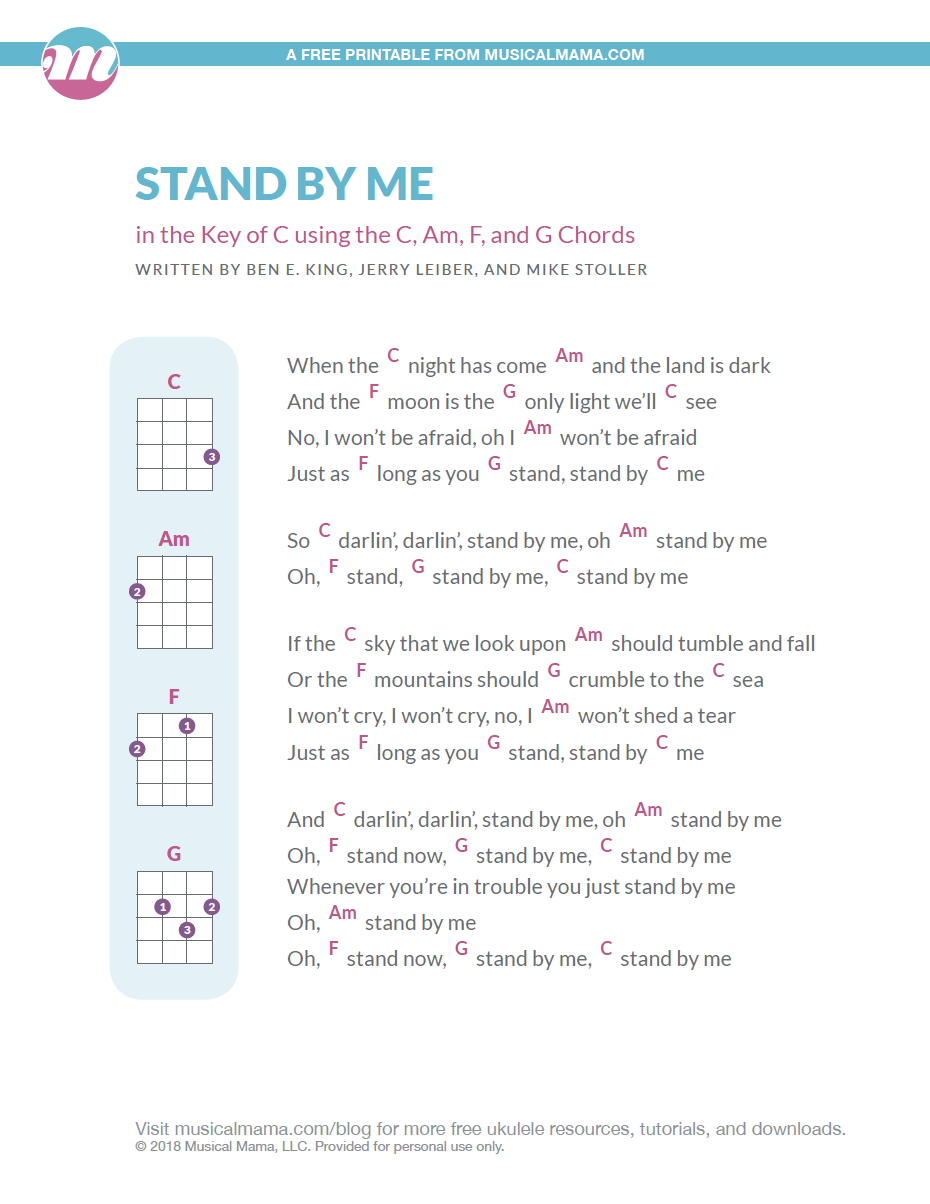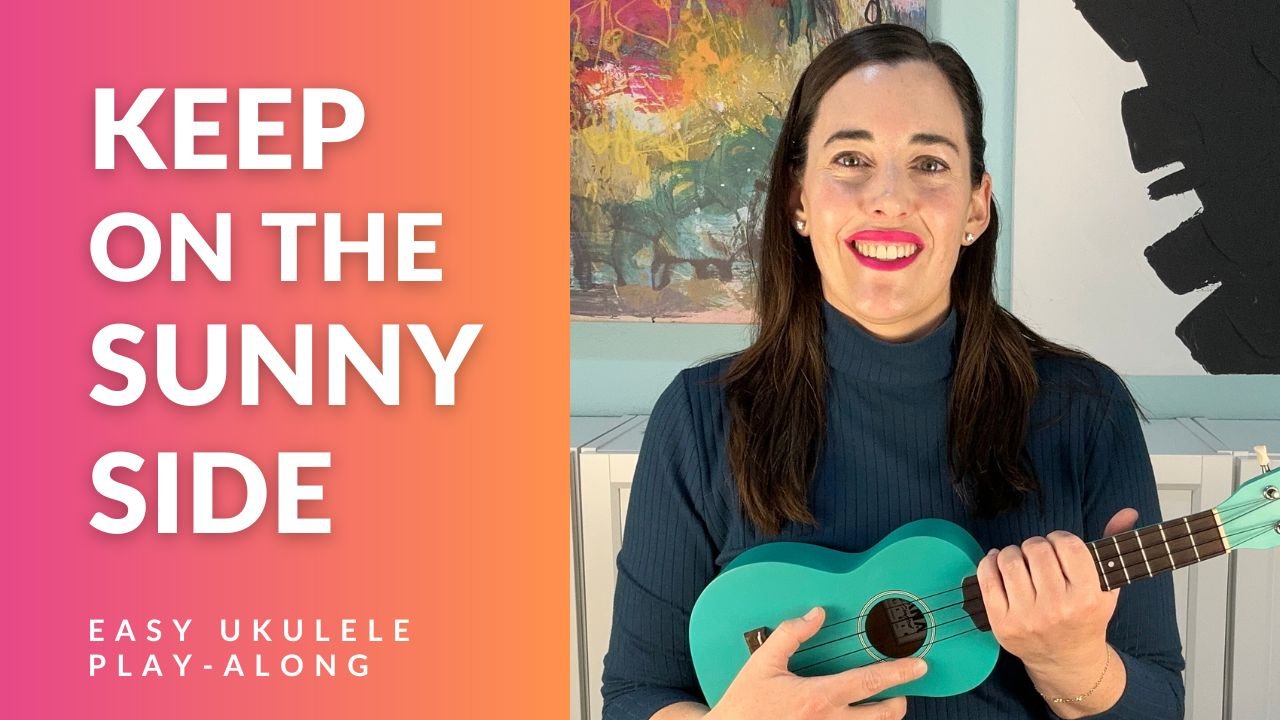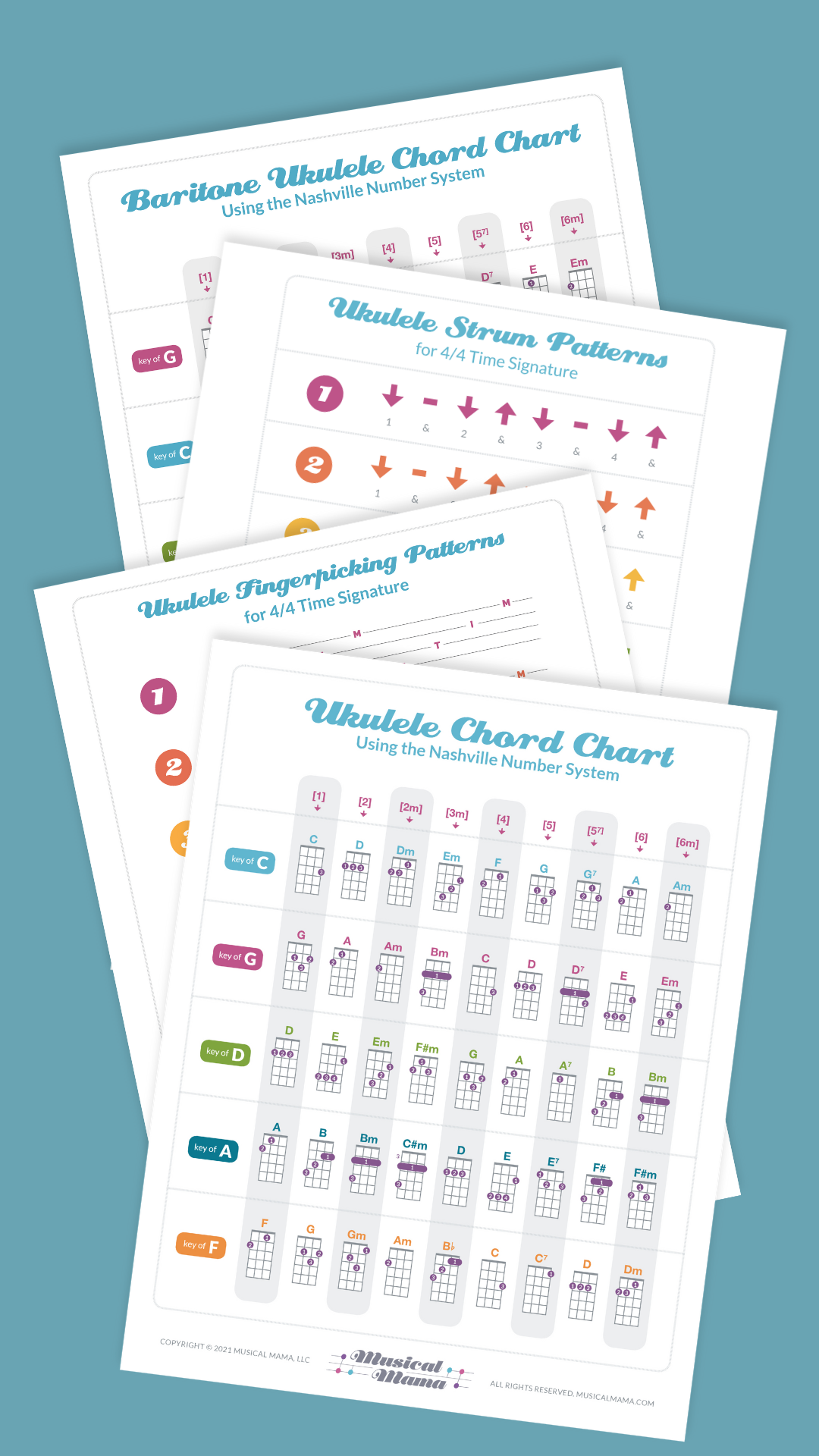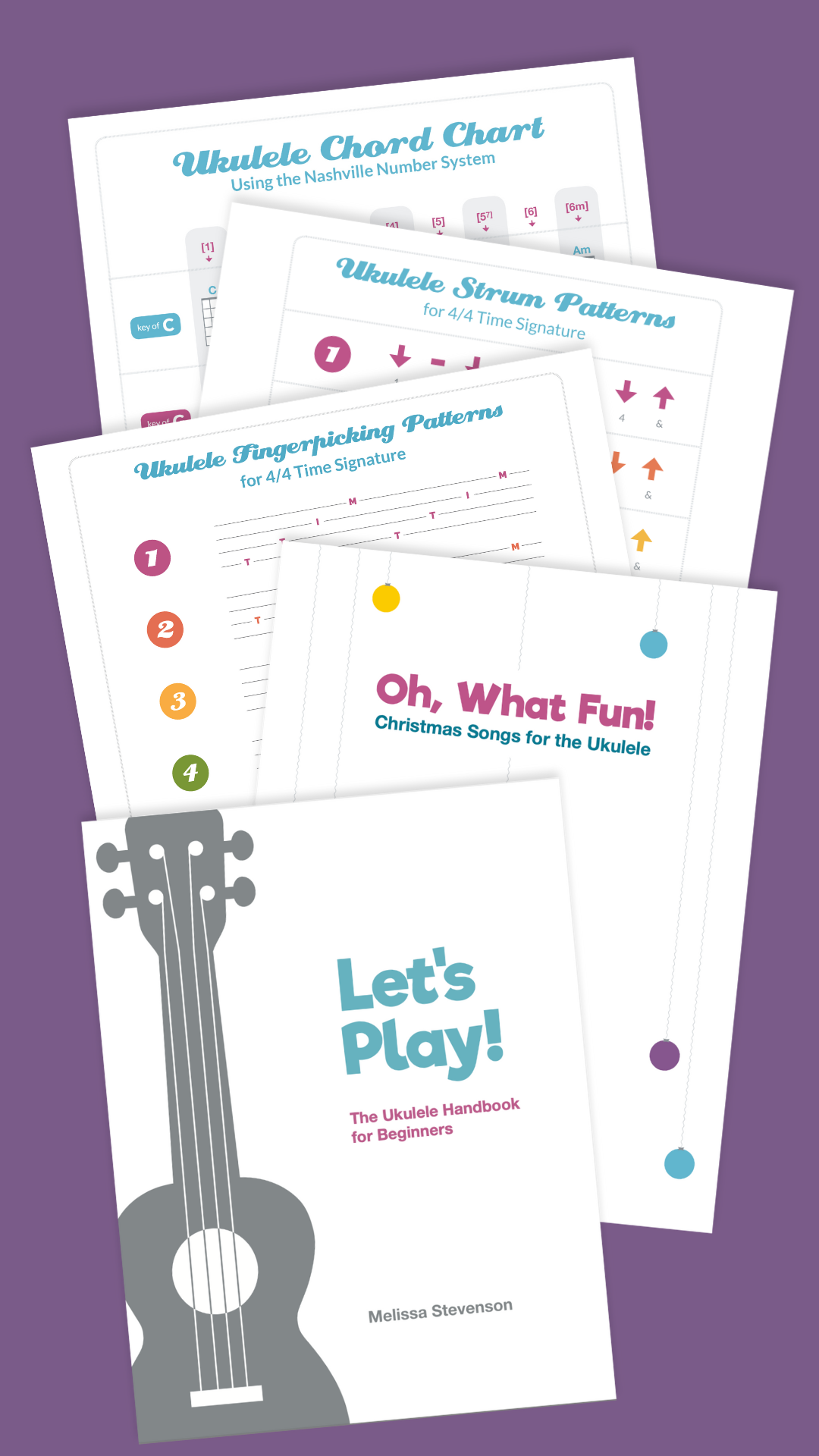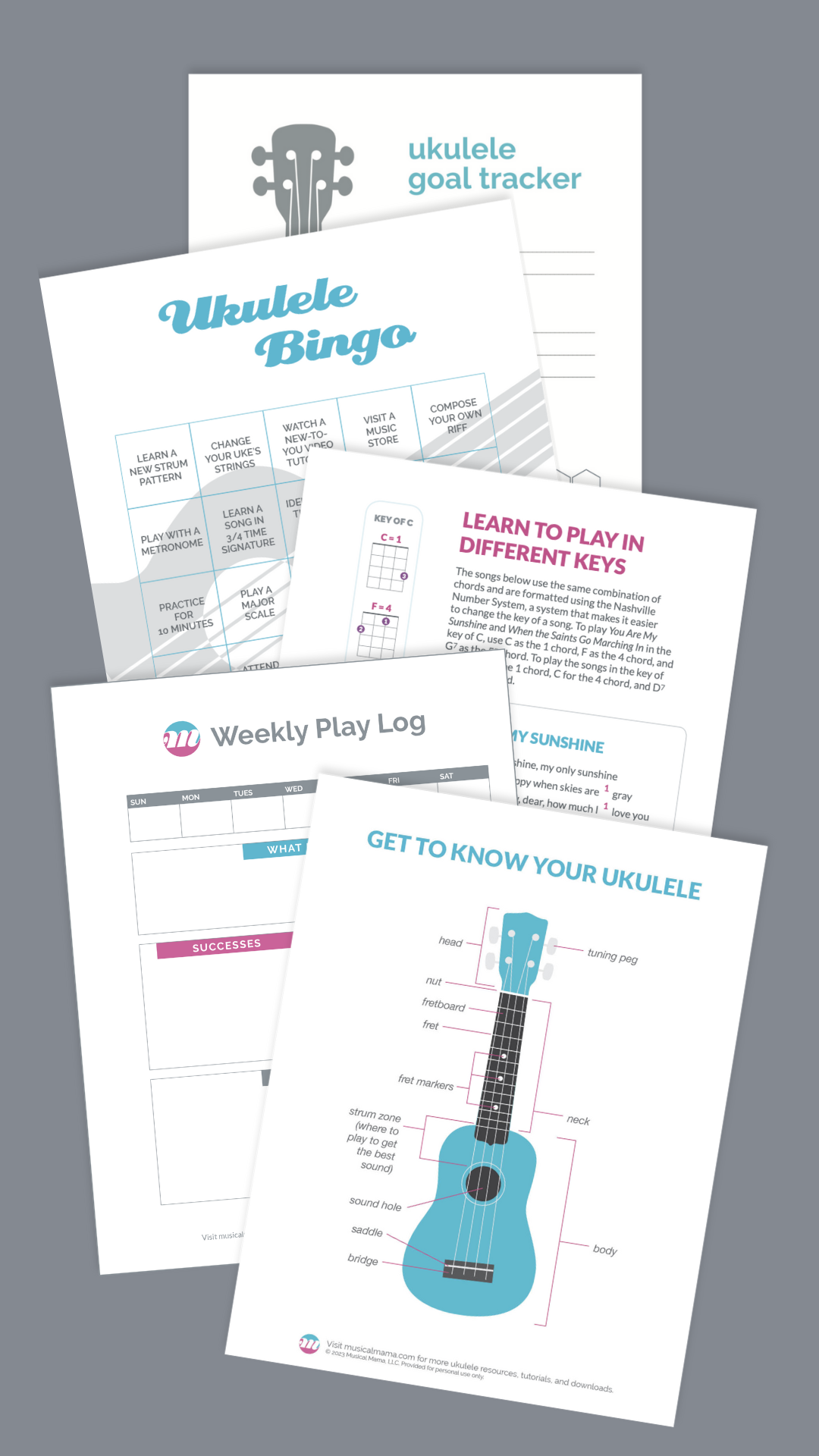This post excerpts content from Let’s Play! The Ukulele Handbook for Beginners.
Let’s begin by defining some basic music terms:
Time Signature
A symbol used in sheet music to indicate the number of beats per measure of music. A song’s time signature determines which strum patterns you can play.
Measure
One unit of music; one grouping of beats
4/4 Time Signature
The most common time signature for Western music. A song in 4/4 time has four beats per measure and is counted 1 - 2 - 3 - 4, 1 - 2 - 3 - 4 . . . 4/4 (“four-four”) time is also referred to as common time because it is the default time signature for pop, rock, R&B, hip-hop, country, folk, etc. 4/4 time is the time signature you are most accustomed to hearing and, as a beginning musician, it’s the time signature you are most likely to be playing.
3/4 Time Signature
The second most common time signature for Western music. A song in 3/4 time has three beats per measure and is counted 1 - 2 - 3, 1 - 2 - 3 . . . 3/4 (“three-four”) time signature is the second most popular time signature for Western music and is frequently referred to as waltz rhythm. When we play in 3/4 time, we count in groups of three (not four), meaning we must alter our strum to suit the rhythm.
In the following video, I play through three beginner waltz strums:
Your primary goal in making music is to maintain a steady beat. Start with variation A to create a nice, basic rhythm as you familiarize yourself with the new count. When you’re keeping a steady beat and appropriately managing your chord changes, give variations B and C a try.
One of my favorite things to do is simplify music theory to make it easier to understand, and I hope this post has helped simplify time signatures for some of you! If you’d like to learn more, check out my book, Let’s Play! The Ukulele Handbook for Beginners. Happy strumming!

